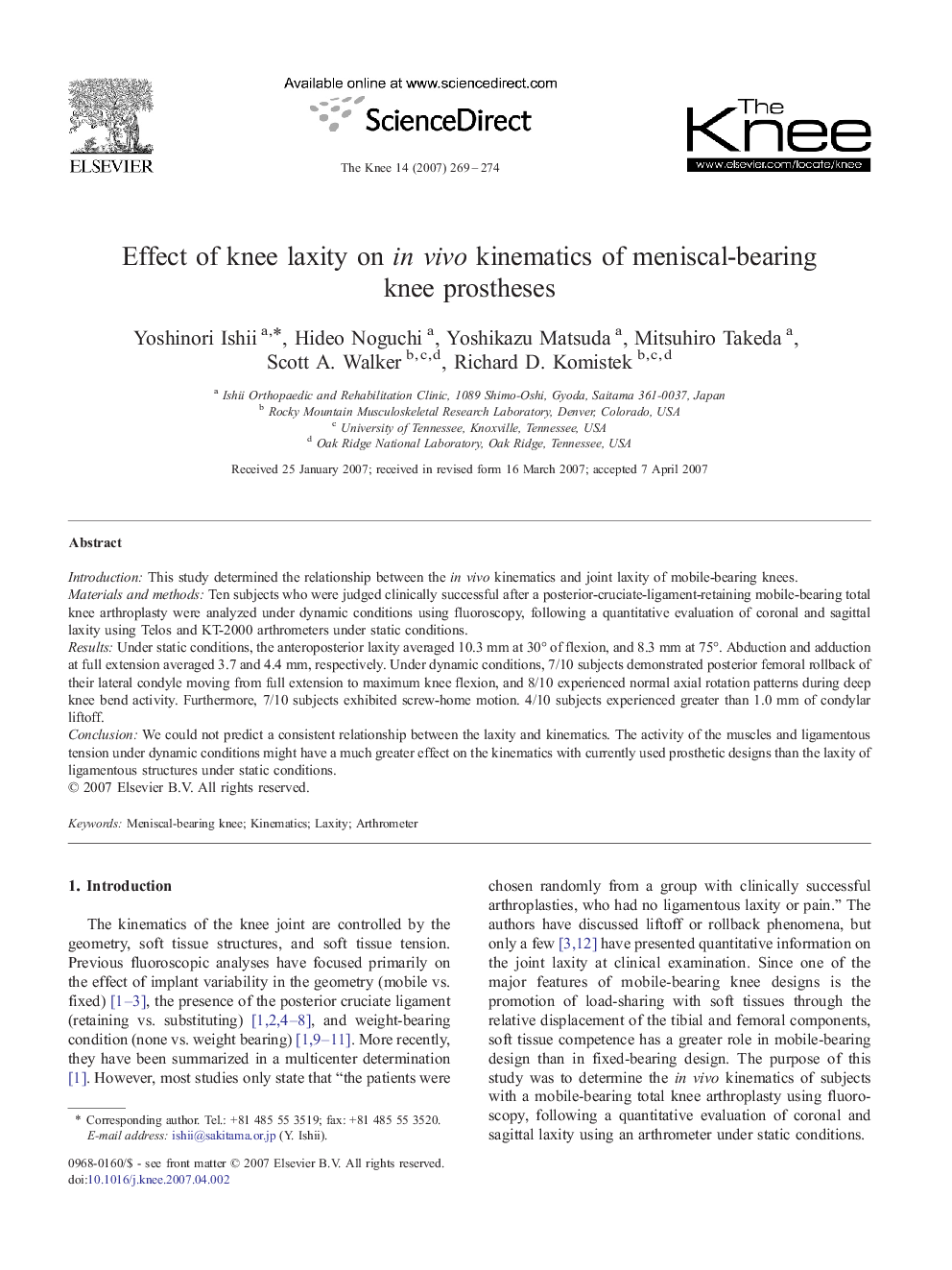| Article ID | Journal | Published Year | Pages | File Type |
|---|---|---|---|---|
| 4078640 | The Knee | 2007 | 6 Pages |
IntroductionThis study determined the relationship between the in vivo kinematics and joint laxity of mobile-bearing knees.Materials and methodsTen subjects who were judged clinically successful after a posterior-cruciate-ligament-retaining mobile-bearing total knee arthroplasty were analyzed under dynamic conditions using fluoroscopy, following a quantitative evaluation of coronal and sagittal laxity using Telos and KT-2000 arthrometers under static conditions.ResultsUnder static conditions, the anteroposterior laxity averaged 10.3 mm at 30° of flexion, and 8.3 mm at 75°. Abduction and adduction at full extension averaged 3.7 and 4.4 mm, respectively. Under dynamic conditions, 7/10 subjects demonstrated posterior femoral rollback of their lateral condyle moving from full extension to maximum knee flexion, and 8/10 experienced normal axial rotation patterns during deep knee bend activity. Furthermore, 7/10 subjects exhibited screw-home motion. 4/10 subjects experienced greater than 1.0 mm of condylar liftoff.ConclusionWe could not predict a consistent relationship between the laxity and kinematics. The activity of the muscles and ligamentous tension under dynamic conditions might have a much greater effect on the kinematics with currently used prosthetic designs than the laxity of ligamentous structures under static conditions.
